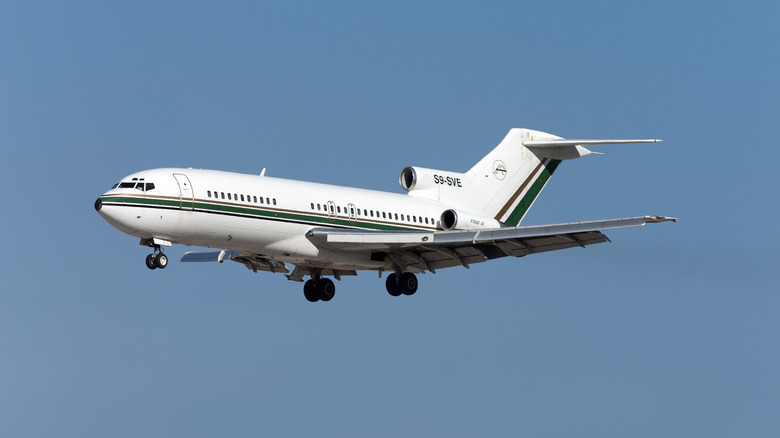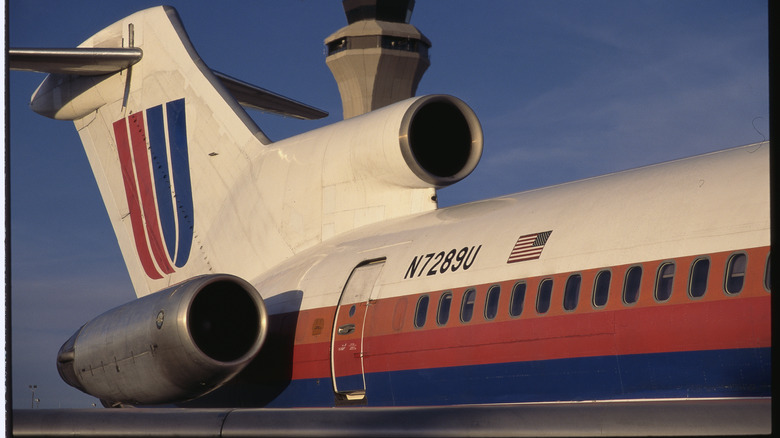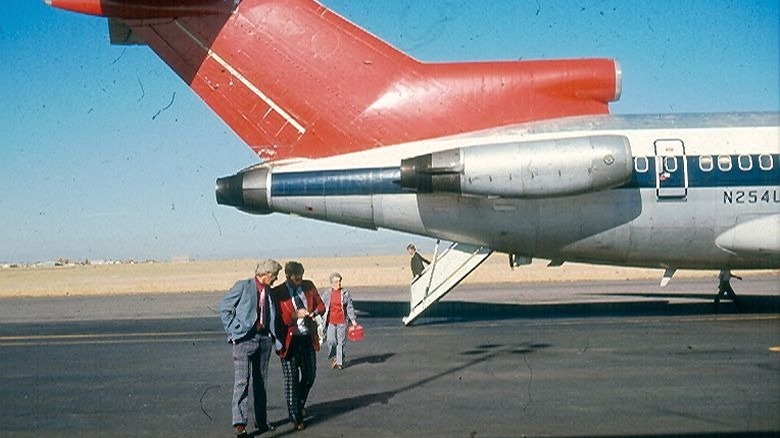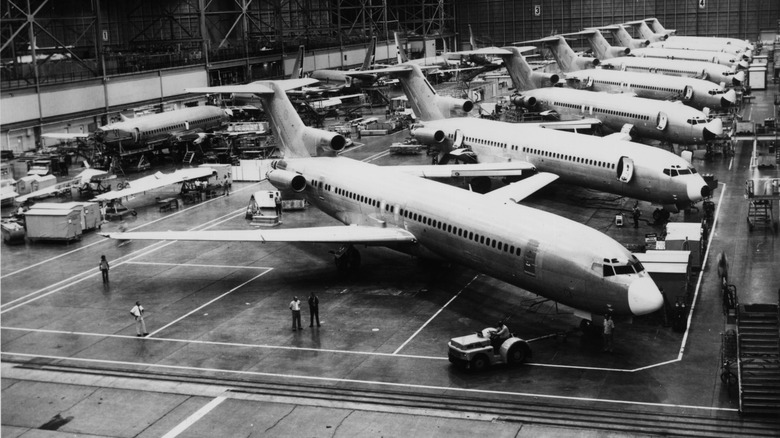What Was The Boeing 727 And What Made It Unique?
When the Flyer of the Wright Brothers leapt off the ground at Kitty Hawk, North Carolina, in December 1903, they never imagined that in just a few (relatively) short decades, their one-person plane would go from a vehicle crafted of spruce, ash, and cotton cloth to steel behemoths carrying hundreds of passengers around the globe.
Boeing's 727 came about after the successful development and launch of its mid-to long-range 707 model, which made its first flight in December 1957 and began its commercial career in October 1958. The Boeing 707, with its four jet engines, first took flight in 1958 and is credited with bringing commercial travel into the jet age.
While the 707 was great for mid-to-long-range travel carrying hundreds of passengers, Boeing recognized that there was an impending need for a jet that could be used on shorter regional routes cropping up around the country. This plane needed to be smaller to carry fewer passengers, but more importantly, it needed to take off and land at smaller airports with shorter runways.
So, using the 707 as a launching point, Boeing developed a cheaper, smaller version dubbed the 720 (aka the "bus stop jet") with low approach speed capabilities and frequent use, bringing jet-powered planes to the regional aviation market. However, Boeing understood the 720 (which first entered service with United Airlines in July 1960) was merely a short-term solution for an exploding market, and even before the 720's contrails had evaporated, the 727 was in development.
Look, up in the sky!
Boeing took a decidedly different approach in building its "Trijet" 727 (one of the 10 biggest trijets to ever grace the skies), but only after speaking to a handful of its largest customers (American, United, and Eastern) and discovered they all had somewhat shared needs. Getting input from customers is one of the reasons the 727 is regarded as an industry classic and one of the fastest-selling airplanes of all time. Its inaugural test flight occurred in February 1963, while its first commercial flight (with United) happened in October of that same year.
Instead of using two or four engines, Boeing went with three to strike a balance between cost savings and proper thrust. It needed to be economical, but also capable of cruising at low-altitude at very slow speeds, going faster at higher altitudes, and still make steep approaches and climb-outs on the short runways of the smaller regional airports.
Two of the three engines were installed on either side of the fuselage below the T-tail, with the third planted directly at the base of the T-tail just above the fuselage. It's the only "Trijet" the company ever built. Mounting them this way let Boeing use the entire length of the wing for its innovative system of flaps and slats. Triple-slotted trailing edge flaps worked in conjunction with inboard leading-edge Krueger flaps and outboard leading-edge slats to achieve more lift, allowing the 727s to operate where the bigger 707s couldn't.
A truly self-sufficient plane
The 727 was also the first jet equipped with hydraulically powered flight controls and an auxiliary power unit (APU), which meant the plane could operate independently without power from the ground. This particular requirement was vital because Eastern Airlines (one of the many forgotten airlines that once soared the skies) had routes to the still-developing Caribbean, where its airports weren't as technologically advanced.
Another feature that allowed the 727s to operate self-sufficiently was a retractable built-in airstair in the rear of the plane's underbelly. This allowed passengers to enter and exit without any assistance from ground facilities, which might not even have moveable stairs or a jet bridge. Initially, the airstair could be operated while the plane was still in flight. However, after the infamous D.B. Cooper incident wherein he hijacked — then parachuted into history — from a Northwest Airlines 727 flight in November 1971, Boeing required that the plane be on the ground in order to open.
Simultaneously, Vietnam was still raging on the world stage. Thus, Boeing built the 727s with rear-fuselage cargo doors large enough to — should they be called into military service — transport and drop mid-flight via parachute jeeps, light trucks, cargo, and even troops.
While the 727 became one of the most successful commercial planes ever built, it was not without its issues. According to many pilots, switching over from flying standard planes to the revolutionary 727 was quite tricky, primarily due to its new wing configuration, what with all of its added flaps and slats.
[Featured image by Robert Rynerson via Wikimedia Commons | Cropped and scaled | CC BY-SA 2.0]
The 727 was loud and proud
With the engines now in back, if the pilot forced the plane into too high of an angle on take-off or landing, it could cause the engines to stall out. To help with this, Boeing equipped the 727 with a stick shaker that let the pilots know they were entering the danger zone.
The added surface area of the wings helped the plane remain stable at lower speeds. When flap positions were set at 40-degrees for landing — a relative position instead of actual degrees according to Boeing — it increased the surface area by another 25% and slowed the plane so much, so quickly, that pilots had a hard time adjusting to the sink rate. It also required more thrust, which in turn caused a substantial increase in fuel burn.
Within a span of three months in 1965, three 727s crashed while landing, killing 131 people. The FAA eventually cleared the planes and attributed all three crashes to pilot error. Soon after, a change was made that required landing flaps to be set at 30-degrees instead of 40-degrees.
Jet engines are noisy just by their sheer nature. However, those on the 727 were some of the loudest on any commercial airline (at over 100 decibels), forcing Boeing to build them with anti-noise kits. Ironically, Boeing only intended to make 250 of the 727s, but went on to make 1,832 between 1963 and when it was discontinued in 1984. It was used by over 100 different airlines.



